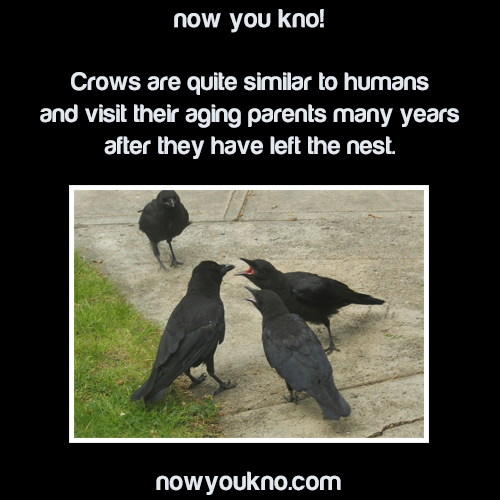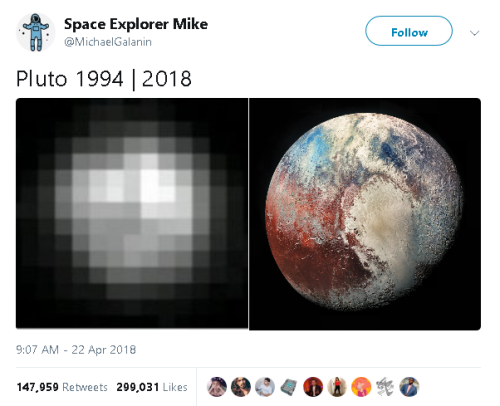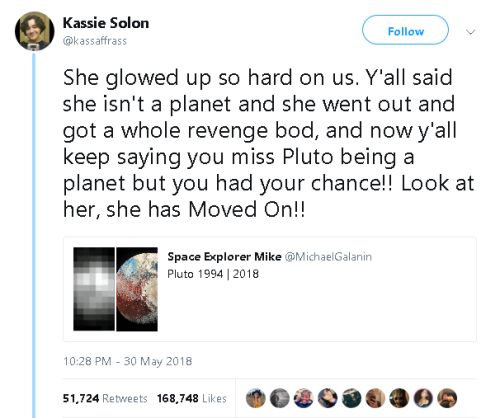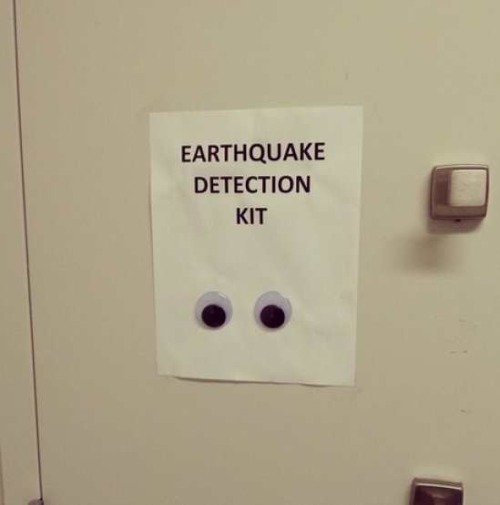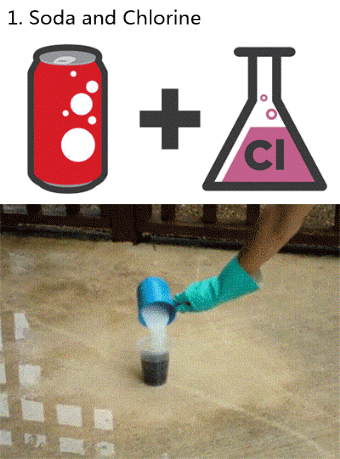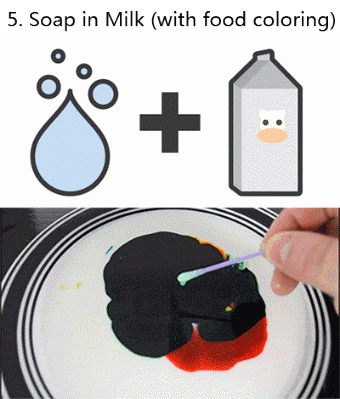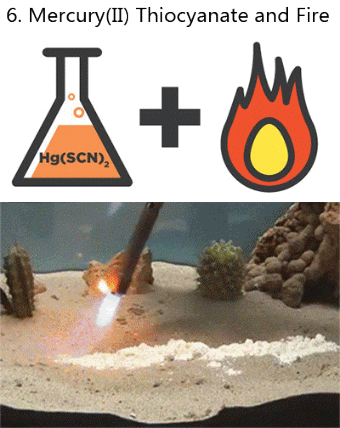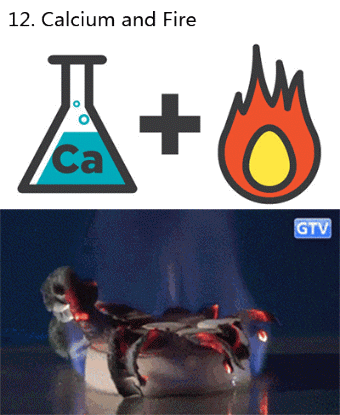DO NOT GIVE OR GET ANY VACCINATIONS FOR YOURSELF OR YOUR KIDS………..

DO NOT GIVE OR GET ANY VACCINATIONS FOR YOURSELF OR YOUR KIDS………..
More Posts from Science-is-magical and Others

From retina to cortex: An unexpected division of labor
Neurons in our brain do a remarkable job of translating sensory information into reliable representations of our world that are critical to effectively guide our behavior. The parts of the brain that are responsible for vision have long been center stage for scientists’ efforts to understand the rules that neural circuits use to encode sensory information. Years of research have led to a fairly detailed picture of the initial steps of this visual process, carried out in the retina, and how information from this stage is transmitted to the visual part of the cerebral cortex, a thin sheet of neurons that forms the outer surface of the brain. We have also learned much about the way that neurons represent visual information in visual cortex, as well as how different this representation is from the information initially supplied by the retina. Scientists are now working to understand the set of rules—the neural blueprint— that explains how these representations of visual information in the visual cortex are constructed from the information provided by the retina. Using the latest functional imaging techniques, scientists at MPFI have recently discovered a surprisingly simple rule that explains how neural circuits combine information supplied by different types of cells in the retina to build a coherent, information-rich representation of our visual world.
Vision begins with the spatial pattern of light and dark that falls on the retinal surface. One important function performed by the neural circuits in the visual cortex is the preservation of the orderly spatial relationships of light versus dark that exist on the retinal surface. These neural circuits form an orderly map of visual space where each point on the surface of the cortex contains a column of neurons that each respond to a small region of visual space— and adjacent columns respond to adjacent regions of visual space. But these cortical circuits do more than build a map of visual space: individual neurons within these columns each respond selectively to the specific orientation of edges in their region of visual space; some neurons respond preferentially to vertical edges, some to horizontal edges, and others to angles in between. This property is also mapped in a columnar fashion where all neurons in a radial column have the same orientation preference, and adjacent columns prefer slightly different orientations.
Things would be easy if all the cortex had to do was build a map of visual space: a simple one to one mapping of points on the retinal surface to columns in the cortex would be all that was necessary. But building a map of orientation that coexists with the map of visual space is a much greater challenge. This is because the neurons of the retina do not distinguish orientation in the first step of vision. Instead, information on the orientation of edges must be constructed by neural circuits in the visual cortex. This is done using information supplied from two distinct types of retinal cells: those that respond to increases in light (ON-cells) and those that respond to decreases in light (OFF-cells). Adding to the complexity, orientation selectivity depends on having individual cortical neurons receive their ON and OFF signals from non-overlapping regions of visual space, and the spatial arrangement of these regions determines the orientation preference of the cell. Cortical neurons that prefer vertical edge orientations have ON and OFF responsive regions that are displaced horizontally in visual space, those that prefer horizontal edge orientations have their ON and OFF regions displaced vertically in visual space, and this systematic relationship holds for all other edge orientations.
So cortical circuits face a paradox: How do they take the spatial information from the retina and distort it to create an orderly map of orientation selectivity, while at the same time preserving fine retinal spatial information in order to generate an orderly map of visual space? Nature’s solution might best be called ‘divide and conquer’. By using imaging technologies that allow visualization of the ON and OFF response regions of hundreds of individual cortical neurons, Kuo-Sheng Lee and Sharon Huang in David Fitzpatrick’s lab at MPFI have discovered that fine scale retinal spatial information is preserved by the OFF response regions of cortical neurons, while the ON response regions exhibit systematic spatial displacements that are necessary to build an orderly map of edge orientation. Preserving the detailed spatial information from the retina in the OFF response regions is consistent with evidence that dark elements of natural scenes convey more fine scale information than the light elements, and that OFF retinal neurons have properties that allow them to better extract this information. In addition, Lee et al. show that this OFF-anchored cortical architecture enables emergence of an additional orderly map of absolute spatial phase—a property that hasn’t received much attention from neuroscientists, but computer vision research has shown contains a wealth of information about the visual scene that can be used to efficiently encode spatial patterns, motion, and depth.
While these are important new insights into how visual information is transformed from retina to cortical representations, they pose a host of new questions about the network of synaptic connections that performs this transformation, and the developmental mechanisms that construct it, questions that the Fitzpatrick Lab continues to explore.







A human brain has around 86 billion neurons, and the communication between these neurons are constant. The sheer scale of these interactions mean a computer (an EEG) can register this electrical activity, with different frequencies indicating different mental states.
Sources
Good news today: the fastest horizontal flyer in the animal kingdom is now a bat.
Free-tailed bats have now been clocked flying horizontally at over 160 kilometers per hour (that’s nearly 100 mph!), toppling the previous record-holder, the swift. The record for speed of diving is still held by the peregrine falcon but we’re coming for you next, feathers.
Source
Flying to New Heights With the Magnetospheric Multiscale Mission
A mission studying Earth’s magnetic field by flying four identical spacecraft is headed into new territory.

The Magnetospheric Multiscale mission, or MMS, has been studying the magnetic field on the side of Earth facing the sun, the day side – but now we’re focusing on something else. On February 9, MMS started the three-month-long process of shifting to a new orbit.

One key thing MMS studies is magnetic reconnection – a process that occurs when magnetic fields collide and re-align explosively into new positions. The new orbit will allow MMS to study reconnection on the night side of the Earth, farther from the sun.

Magnetic reconnection on the night side of Earth is thought to be responsible for causing the northern and southern lights.

To study the interesting regions of Earth’s magnetic field on the night side, the four MMS spacecraft are being boosted into an orbit that takes them farther from Earth than ever before. Once it reaches its final orbit, MMS will shatter its previous Guinness World Record for highest altitude fix of a GPS.
To save on fuel, the orbit is slowly adjusted over many weeks. The boost to take each spacecraft to its final orbit will happen during the first week of April.

On April 19, each spacecraft will be boosted again to raise its closest approach to Earth, called perigee. Without this step, the spacecraft would be way too close for comfort – and would actually reenter Earth’s atmosphere next winter!

The four MMS spacecraft usually fly really close together – only four miles between them – in a special pyramid formation called a tetrahedral, which allows us to examine the magnetic environment in three dimensions.

But during orbit adjustments, the pyramid shape is broken up to make sure the spacecraft have plenty of room to maneuver. Once MMS reaches its new orbit in May, the spacecraft will be realigned into their tetrahedral formation and ready to do more 3D magnetic science.

Learn more about MMS and find out what it’s like to fly a spacecraft.
My kid is playing a paper piano. I think I might be more wowed than anyone else in my house.
Besides the nerdy factor of circuit completion and conductivity of graphite… It’s just kind of kickass that a paper piano that I drew can work just like a real one with minimal effort AND my kids can play it way easier than a real piano.
-
 elswere-1 liked this · 2 weeks ago
elswere-1 liked this · 2 weeks ago -
 transmascvash liked this · 3 weeks ago
transmascvash liked this · 3 weeks ago -
 the-clay-king liked this · 1 month ago
the-clay-king liked this · 1 month ago -
 awardwinningbread liked this · 4 months ago
awardwinningbread liked this · 4 months ago -
 void-shrieks reblogged this · 4 months ago
void-shrieks reblogged this · 4 months ago -
 wishfulina reblogged this · 4 months ago
wishfulina reblogged this · 4 months ago -
 hot-cocoa1032 reblogged this · 4 months ago
hot-cocoa1032 reblogged this · 4 months ago -
 littlemissadams reblogged this · 4 months ago
littlemissadams reblogged this · 4 months ago -
 tmarauder101 reblogged this · 4 months ago
tmarauder101 reblogged this · 4 months ago -
 tmarauder101 liked this · 4 months ago
tmarauder101 liked this · 4 months ago -
 just-your-average-cryptid reblogged this · 4 months ago
just-your-average-cryptid reblogged this · 4 months ago -
 auroralynne liked this · 4 months ago
auroralynne liked this · 4 months ago -
 vela--nova reblogged this · 4 months ago
vela--nova reblogged this · 4 months ago -
 rainbowcoloreddays liked this · 4 months ago
rainbowcoloreddays liked this · 4 months ago -
 anipwrites reblogged this · 4 months ago
anipwrites reblogged this · 4 months ago -
 poore-choice-of-words reblogged this · 4 months ago
poore-choice-of-words reblogged this · 4 months ago -
 irrepressible-domovoy reblogged this · 4 months ago
irrepressible-domovoy reblogged this · 4 months ago -
 deepdrearn liked this · 5 months ago
deepdrearn liked this · 5 months ago -
 ninunque liked this · 5 months ago
ninunque liked this · 5 months ago -
 child--ish liked this · 5 months ago
child--ish liked this · 5 months ago -
 annahpmn8 liked this · 6 months ago
annahpmn8 liked this · 6 months ago -
 norikomorishima liked this · 6 months ago
norikomorishima liked this · 6 months ago -
 annita89e5qypoh liked this · 6 months ago
annita89e5qypoh liked this · 6 months ago -
 annauef3o liked this · 7 months ago
annauef3o liked this · 7 months ago -
 hanimminju liked this · 9 months ago
hanimminju liked this · 9 months ago -
 nyrvasil reblogged this · 9 months ago
nyrvasil reblogged this · 9 months ago -
 nyrvasil liked this · 9 months ago
nyrvasil liked this · 9 months ago -
 livingtobethevillain liked this · 10 months ago
livingtobethevillain liked this · 10 months ago -
 zbbornak liked this · 1 year ago
zbbornak liked this · 1 year ago -
 yukatanpress liked this · 1 year ago
yukatanpress liked this · 1 year ago -
 ry-sch liked this · 1 year ago
ry-sch liked this · 1 year ago -
 reat13 liked this · 1 year ago
reat13 liked this · 1 year ago -
 pasparal reblogged this · 1 year ago
pasparal reblogged this · 1 year ago -
 eggpoint liked this · 1 year ago
eggpoint liked this · 1 year ago -
 whoretastictiger liked this · 1 year ago
whoretastictiger liked this · 1 year ago -
 liraherputi liked this · 1 year ago
liraherputi liked this · 1 year ago -
 trepzamonkolu liked this · 1 year ago
trepzamonkolu liked this · 1 year ago -
 diobesilteto liked this · 1 year ago
diobesilteto liked this · 1 year ago -
 cass-ass liked this · 1 year ago
cass-ass liked this · 1 year ago -
 blake-rph liked this · 1 year ago
blake-rph liked this · 1 year ago

